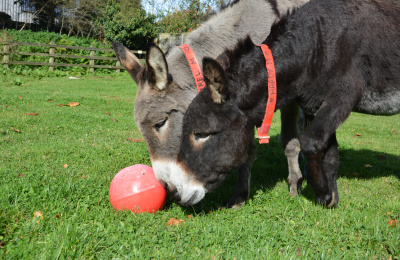Learn how donkeys interact with their surroundings and how it helps improve environmental diversity.
Natural environments are essential for our understanding of donkey ecology – that is, how donkeys interact with their environment, each other and other species.
An enriched environment is as important to donkeys as it is to us; it provides nutritional benefits and reinforces their mental and emotional wellbeing.
How is wildlife important to donkeys and mules?
It's all down to biodiversity. The variation and variability of life tell us a lot about the health of our environment. The number of different species and their abundance relies on healthy habitats and sustainable systems.
In turn, they make our environment biologically complicated and resilient to pressures such as a changing climate. By encouraging wildlife to thrive, we protect our vital resources, like suitable grassland for our donkeys to graze, long into the future.
How do donkeys help with biodiversity?
One of the most exciting developments over the last couple of years has been moving our donkeys onto species-rich grassland. The Weston Valley at Slade House Farm at our Sidmouth headquarters in Devon is an excellent example of grassland that has not received fertiliser or intensive management and therefore has naturally occurring wildflowers.
Grazing by donkeys can further increase the grassland species' diversity because they eat a wide variety of plants and happily take out the coarser and more dominant species that might otherwise shade out or outcompete herbs and fine grasses.
Donkeys enjoy woody and prickly species, so they are excellent at controlling gorse, thistle, bramble and other scrub species that might encroach and smother wildflowers. The vegetation tends to have lower sugar levels and be more fibrous, so this tends to suit donkeys much better nutritionally than typical single-grass paddocks. The variety of plants on offer means donkeys can express a wider range of foraging and browsing behaviours, testing and selecting different tastes and textures, nibbling and chewing as well as grazing.
If allowed to graze and move around a large area freely, donkeys leave behind variable grasses, which means there is a lot of variation in the grass's structure and height, creating a range of conditions for different species to establish and thrive – again increasing botanical diversity. Last summer, we saw pignut, birds-foot trefoil, vetches, black knapweed, meadow vetchling and common-spotted orchid flourish.



